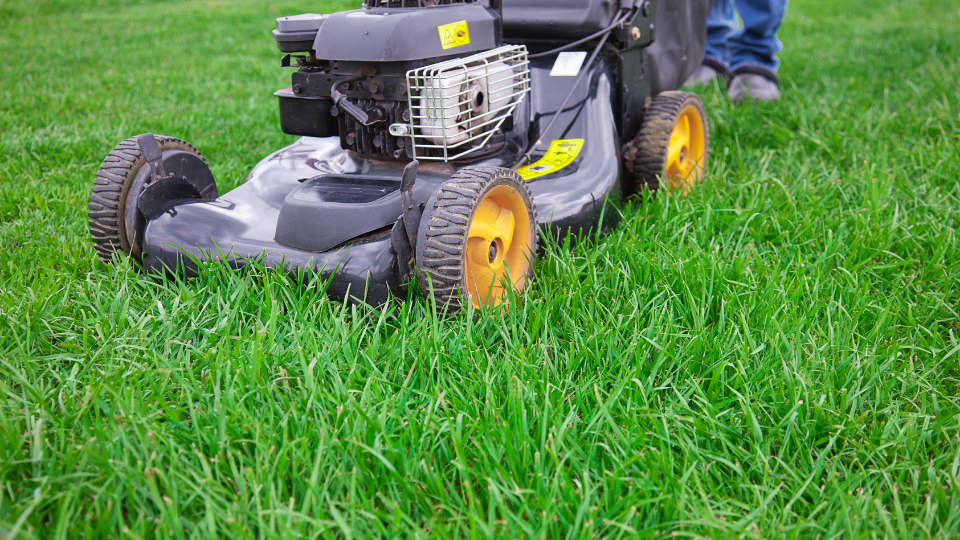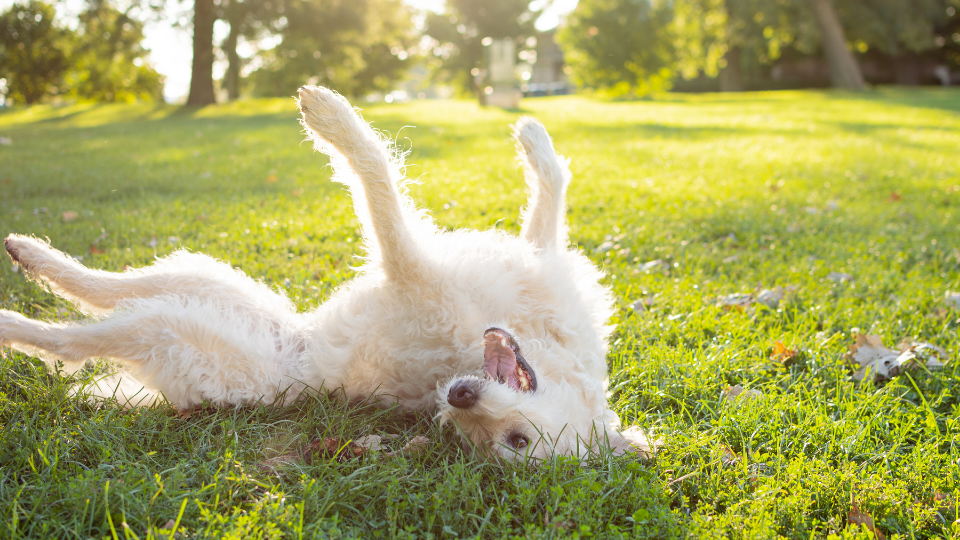If you are looking to have a green, healthy, and lush lawn, spring fertilization is a garden task you don’t want to overlook. A well fed lawn is your best defense against many common problems that homeowners face when it comes to their turf. Today’s blog will explain why spring fertilization is important and offer some tips for when and how to apply it. You can always go the extra mile and get your soil tested so that you know exactly what nutrients your specific lawn needs, but the info below is a good outline for basic spring lawn fertilization.
When to Apply Spring Lawn Fertilizer
You want to apply spring lawn fertilizer when your turf is actively growing. This growth period begins about 6 weeks after our last frost date. The general timeframe for our warm weather grasses to be ready to take up the nutrients from spring lawn fertilizer is around mid April. This is a good timeline to follow and figure out when to apply your choice of fertilizer.
Organic fertilizer gets put down about 4-6 weeks earlier than synthetic because it needs that time period for its ingredients to break down into a form that can be taken up by the lawn once it begins growing. This is why we advise to apply organic spring lawn fertilizer around late February.
Synthetic fertilizer starts getting put down around mid April when warm weather grasses have woken up from their winter slumber. The nutrients in synthetic fertilizer are readily available to be taken up by turf. Our spring weather fluctuates and so the timing for applying spring lawn fertilizer can also fluctuate. This is why the time frame is not set in stone. Your spring application down after you have mowed your grass two or three times (not your weeds, the actual lawn). This way, you know your turf has truly woken up and is actively growing.


Why Spring Lawn Fertilization is Important
Whichever fertilizer you choose, just make sure you don’t skip this spring gardening task. The reasons to apply it are plentiful and skipping it may cause you to battle the health of your lawn all summer long.
Fertilizing your lawn in spring provides you with your first line of protection against pests, disease, and weeds that compete with your turf for valuable nutrients. It’s a fact that pests seek out plants that are weak or damaged, seeing them as susceptible prey, and your lawn is included in their choice of meal. Weak turf also tends to invite more disease issues, and a sparse lawn allows space for weeds to creep in and suck nutrients dry. On the contrary, a well fed lawn that is properly maintained is able to choke out more weeds and defend itself against hungry pests and invasive disease.


How to Fertilize Your Lawn in Spring
The biggest take away in how-to steps for fertilizing your lawn is to READ YOUR LABEL. While many products offer the same results, the directions for how to get them can vary. It is extremely important that you follow the directions for application of your fertilizer. This goes for all gardening products that you plant to use. You will have the best chance for success if you do this. Trust us on this. When we hear a customer complaining about the effectiveness of a product, more often than not, we find out that the directions weren’t followed or a step was skipped.
The following are GENERAL steps for application of spring lawn fertilizer:
- Measure your lawn so that you know how much fertilizer you need to purchase. Try to divide your lawn into square or rectangle sections and measure it by feet. Multiply length x width to obtain sq. footage. (Ex: Our Rainbow Garden 19-5-9 covers 7,600 sq. ft.) Add up the sections and you have your lawn measurements.
- Extra Tip: If you have leftover Rainbow Gardens 19-5-9 lawn fertilizer, it also works great for shrubs and perennials.)
- Use a rotary spreader or drop spreader and calibrate them according to the label of your fertilizer bag.
- Rotary spreaders cover a wider area at application, they fan out the fertilizer as you walk. These are ideal for large, open expanses of turf.
- Drop spreaders cover the area directly between the wheels of the spreader, and work great when you have a lot of trees or shrubs to maneuver around.
- Fill your spreaders off of the lawn to avoid over spillage. Make sure to always be in motion when you have the spreader gate open to apply fertilizer.
- An extra great tip is to divide your fertilizer amount in half and spread it in one direction and then follow up with spreading the other half perpendicular to the first direction. This helps minimize any streaking from the nitrogen in the fertilizer hitting some areas and not others.
- Avoid over fertilizing, and avoid getting the fertilizer on sidewalks, driveways, etc… This will help prevent runoff which is a major problem in polluting our water supplies. If you do get fertilizer on these areas, sweep it back into the turf rather than hosing it off.
- Some people think it would be beneficial to fertilize before a rain, but it is actually better advised to irrigate with your normal sprinkler system. Rain can cause excess runoff. The more gentle sprinklers will get nutrients into the soil at the right pace and help prevent runoff.
- Follow up with a fertilizer application in fall for quicker spring greenup, denser lawn, winter weed resistance.


Here’s to hoping the grass is always greener on your side of the fence!
~The Happy Gardener, Lisa Mulroy


Do you do soil test? If so, what steps do I take to have soil tested on my lawn? Thank you!!
Sorry, no, we do not do tests at our nurseries. You can get info on soil testing here. just keep in mind that these testings are usually for pH levels and what minerals you may need. They do not diagnose fungal issues.
After a couple weeks of good cuts in grass… apply fertilizer. Which is best for st. Augustine?
Hi Stephen,
If you are a San Antonio resident (or surrounding area), we would suggest the Rainbow Gardens 19-5-9 fertilizer as it has been specially formulated for our region.